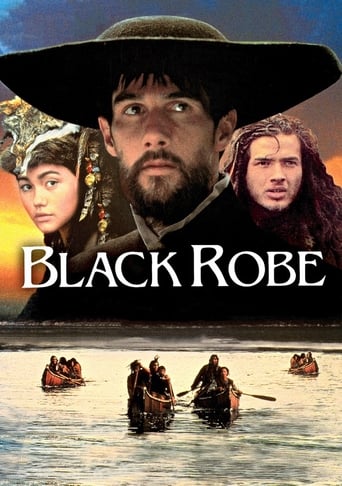In the winter of 1634, an extraordinary man began a perilous journey into the North American wilderness.
"Black Robe," a 1991 film produced by Samson Productions and First Choice Canadian Communication Corporation, is a compelling historical drama set in 17th-century Canada. Directed by Bruce Beresford, the movie delves into the complex interactions between Jesuit missionaries and the indigenous Algonquin and Iroquois peoples. The narrative follows Father Laforgue, portrayed by Lothaire Bluteau, as he embarks on a perilous journey to establish a mission in the New World, accompanied by a young Algonquin guide, Chomina, played by August Schellenberg. The film's title, "Black Robe," refers to the nickname given to Jesuit priests by the indigenous peoples due to their distinctive black cassocks. The film's strength lies in its unflinching portrayal of cultural clashes and the harsh realities of colonial encounters. Beresford masterfully captures the tension and mistrust between the European settlers and the native tribes, highlighting the profound misunderstandings and prejudices that often characterized these interactions. The cinematography, which beautifully captures the stark and unforgiving Canadian wilderness, adds a layer of authenticity and immersion, drawing viewers into the characters' struggles and the unforgiving environment they navigate. "Black Robe" also stands out for its nuanced character development and its refusal to romanticize either the Jesuit mission or the indigenous way of life. Father Laforgue's journey is one of both physical and spiritual trial, as he grapples with his faith and the moral complexities of his mission. Meanwhile, the indigenous characters are portrayed with depth and dignity, challenging the often one-dimensional depictions found in similar historical narratives. The film's use of the Algonquin and Iroquois languages, along with subtitles, further enhances its authenticity and respect for the cultures it portrays. Released in Australia and Canada, "Black Robe" received critical acclaim for its honest and thought-provoking depiction of a pivotal moment in history. The film's exploration of themes such as faith, cultural collision, and survival in the face of adversity resonates with audiences, offering a poignant reflection on the enduring impact of colonialism. "Black Robe" remains a powerful cinematic achievement, praised for its historical accuracy, compelling storytelling, and its ability to provoke meaningful dialogue about the past and its relevance to the present.
Năm:1991
Ngân sách11000000$
Thời lượng101 phút
Doanh thu8211952$
Thể loạiPhim Phiêu LưuPhim Chính KịchPhim Lịch Sử
Các quốc gia sản xuấtAustraliaCanada

